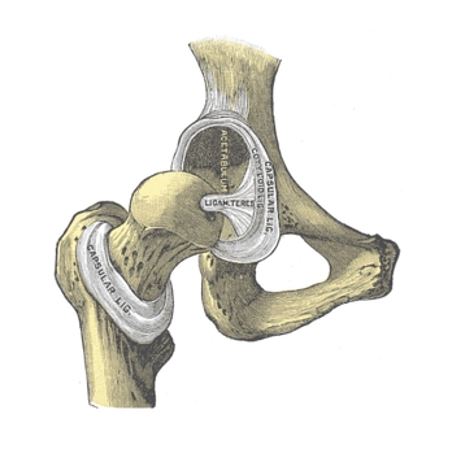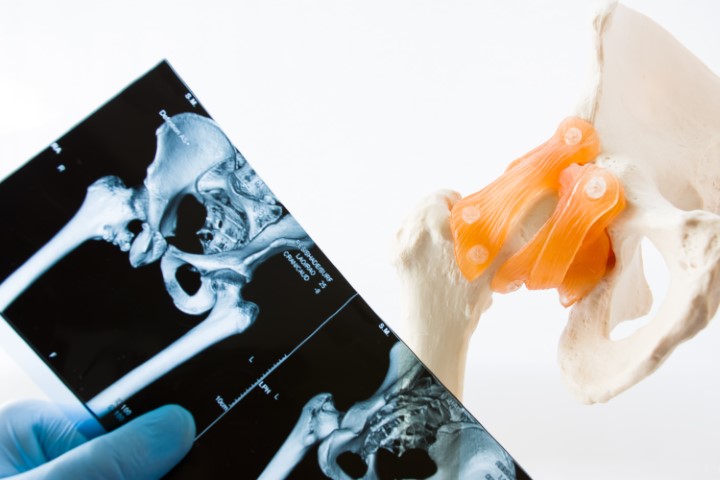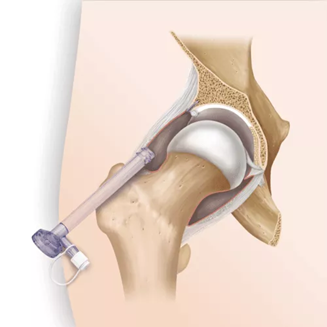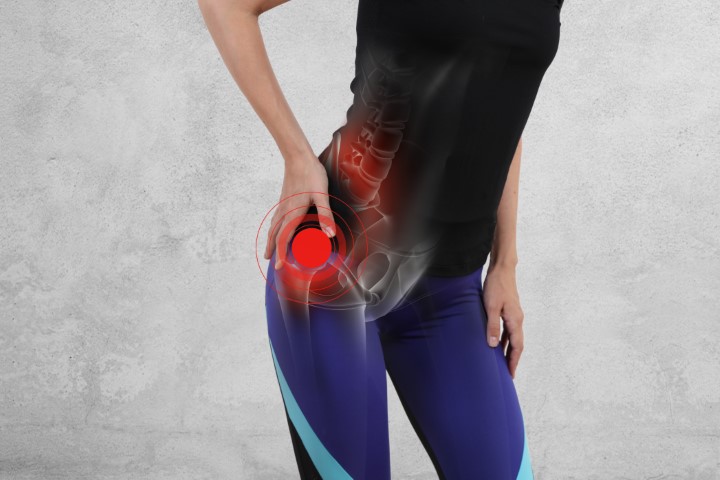What is the ligamentum teres?
Hip pain can often be debilitating, reducing our range of movement and significantly affecting our recreational and activities of daily living. It can come on gradually or result due to injury or trauma. One possible cause of pain in the hips is a tear in ligamentum teres - a ligament that stabilizes the ball and socket joint (connects the femoral head to the acetabulum). It also supplies blood to the top of the thigh bone but this becomes less important in adulthood.
For ligamentum teres tear treatment, Melbourne residents can approach the experts here at MOATI. Dr Chandrasekran - a Melbourne orthopaedic surgeon and his team will thoroughly examine your hip joint and provide you with the treatment plan suited to your individual needs.
Traumatic injury or repetitive twisting movement of the hip joint can result in damage or a tear to the ligamentum teres. Ligamentum teres tears often lead to severe pain. Ligamentum teres tears can be classified as either complete or partial tears. Tears may occur acutely or due to repetitive injury called degenerative fraying.
The ligamentum teres, otherwise known as the ligamentum capitis femoris, is an intra-articular ligament that consists of two bands that connect the femoral head (ball) to the acetabulum (socket). In an infant or child, its function is to transmit a nutrient artery to the femoral head epiphysis. However, its role in the adult is yet to be fully understood, but researchers have suggested its functions may be:
- To aid the coordination of the hip
- Act as a hip stabilizer in patients who have general hip joint laxity and hip dysplasia
- Helps maintain our upright position when weight bearing
- Evenly distributes the synovial fluid to facilitate lubrication of the hip joint

The ligamentum teres has an important role in stabilizing the hip joint, particularly during hip flexion and rotation.
Causes of ligamentum teres tears
Ligamentum teres tears or ruptures are caused by falls, twisting or hyperextension injuries to the leg. Dislocation or subluxation of the hip joint can also cause ligamentum teres tears, commonly through sports injuries. In addition, patients suffering from underlying inflammatory musculoskeletal conditions (such as femoroacetabular impingement and chronic inflammatory arthritis) may be predisposed to injury or tear. The overall incidence of ligamentum teres ruptures is small.
Ligamentum teres tear symptoms
Ligamentum teres ruptures may cause pain, locking or catching sensation and popping with the movement of the hip. Bleeding in the joint may also occur, making the joints feel tight or swollen. This may lead to calcification of the ligament.
How are ligamentum teres tears diagnosed?
Diagnosing ligamentum teres tears has proved difficult given the lack of a specific clinical test available. There are multiple proposed mechanisms of injury to the ligamentum teres including trauma, femoroacetabular impingement, and overuse.
To diagnose your tear, Dr Chandrasekaran will perform a thorough history and physical exam to assess the function of your hip movement and establish the location of your pan. The hip will be moved through a range of motion and stressed in certain ways to elicit pain or feelings of laxity.
An MRI scan may be used to take a closer look at damage caused to ligaments and soft tissues to help confirm your diagnosis. However, some ligamentum teres ruptures are found at the time of arthroscopic surgery when the surgeon is treating other injuries.

Medical imaging allows us to determine the extent of your damage and assess whether damage has been done to surrounding ligaments or bones.
Possible complications
As with all musculoskeletal injuries, most patients may suffer from a number of possible complications if they tear their ligamentum teres, including:
- Inflammation of the hip
- Arthritis
- Reduced hip movement and function
- Synovitis which can lead to further cartilage damage
How ligamentum teres tear is treated
Treatment of ligamentum teres tears varies depending on your individual characteristics. Most patients may benefit from conservative treatments to help manage their pain. However, for those who are younger or have more physically demanding requirements, surgical intervention may be required.

Non-Operative
Ligamentum teres ruptures are usually incidental findings and are associated with other injuries in the hip. Dr Chandrasekaran may use a series of conservative treatments to aid with rehabilitation, including:
- prescribe anti-inflammatory medication
- physical therapy and activity modification to decrease pain and inflammation.
- For more serious pain, an injection of local anaesthetic or corticosteroid may be used to help alleviate pain and inflammation of the joint. Other injections such as hyaluronic acid and platelet-rich plasma may be trialled depending on other associated findings in the hip joint.
If the symptoms resolve, no further treatment is necessary. When all treatment options have been exhausted, surgery is recommended.

Operative
Since ligamentum teres tears are usually associated with other pathology, they may not be diagnosed until the time of surgery when the surgeon is treating another condition. If recognized, the surgeon may choose to:
- Resect the ruptured tissue, as other ligaments of the hip help with stability and other vessels help with blood supply.
- Repair or reconstruct the ligamentum teres with a graft (from a donor) and a series of sutures, screws or buttons to repair the graft to the bones.
The surgery is most often performed arthroscopically, by inserting a camera and various surgical tools through a small incision. You will be sedated under both general and local anaesthetic to reduce pain and promote comfort.

Ligamentum teres tears can be treated by an orthopaedic surgeon. Treatment may involve arthroscopic surgery.
How long is the recovery time?
The recovery time varies between individuals. There are multiple factors that contribute to the speed of your recovery such as your body’s ability to heal, whether there was any bone removal during your procedure, and how well you comply with your aftercare. However, for most, the following timeline is applicable:
- You will stay overnight to allow Dr Chandrasekaran to monitor your vitals. Most patients will go home the morning after their surgery.
- You can return to work after 2 weeks if you have a sedentary job, or 6 weeks if your job is physically demanding.
- You will be given a variety of physical therapy exercises to follow, allowing you to get back to light activity within 4 weeks, and running by 6 weeks.
- Complete recovery varies depending on your body’s ability to heal and how well you follow your exercises.
How much does a ligamentum teres tear treatment cost in Melbourne?
The cost of ligamentum teres tears vary depending on the extent of your injury and whether surgical intervention is needed. There are multiple factors that contribute to the overall cost of your treatment, including:
- $200 consultation fee ($76.15 Medicare rebate available)
- $100 follow-up consultation fee ($38.25 Medicare rebate available)
- Orthopaedic surgeon costs
- Cost of the anaesthetic
- Cost of your aftercare
The total cost applicable to you will be given to you by Dr Chandrasekaran following your initial consultation.

We treat all patients with the same quality of care as that of a professional athlete, ensuring you achieve top-level performance in all activities.
Why choose MOATI?
Our lead orthopaedic surgeon, Dr Siva Chandrasekaran prides treating all patients with the same level of care and support as that a professional athlete, with the aim of restoring top-level performance for all. All treatment plans devised by Dr Chandrasekaran are tailored to your needs, ensuring that you can return to a happy and active life following your treatment of choice.
Dr Chandrasekan has honed his experiences following the completion of prestigious surgical fellowships in the United Kingdom and Switzerland. He has a keen interest in the treatment of hip and knee pain and has published over 50 articles on arthroscopic hip and knee surgery.
If you are troubled by debilitating pain in your hips and have struggled to find treatments that have alleviated your discomfort, then contact us today to find out just how we can help.
FAQs
Below you can find some additional information on the causes, diagnosis, and treatment of ligamentum teres tears.
When the ligamentum teres is damaged, patients may feel severe pain accompanied by restricted movements. Common symptoms include immobility, clicking and locking of the joint, and pain.
Risk factors for tearing the ligamentum teres include:
- Having underlying femoroacetabular impingement
- Gymnasts and dancers - The flexibility and complex movements during these exercises increase the risk of a tear
Surgery should be sought out once all conservative treatments have proved unsuccessful and the pain is significantly affecting your ability to perform a regular activity.
If you work at an office, then you can resume work after 2 weeks. For a more physically demanding job, 6 weeks.
If left untreated, ligamentum teres tears can lead to further complications including inflammation of the hip, arthritis, and infection.
